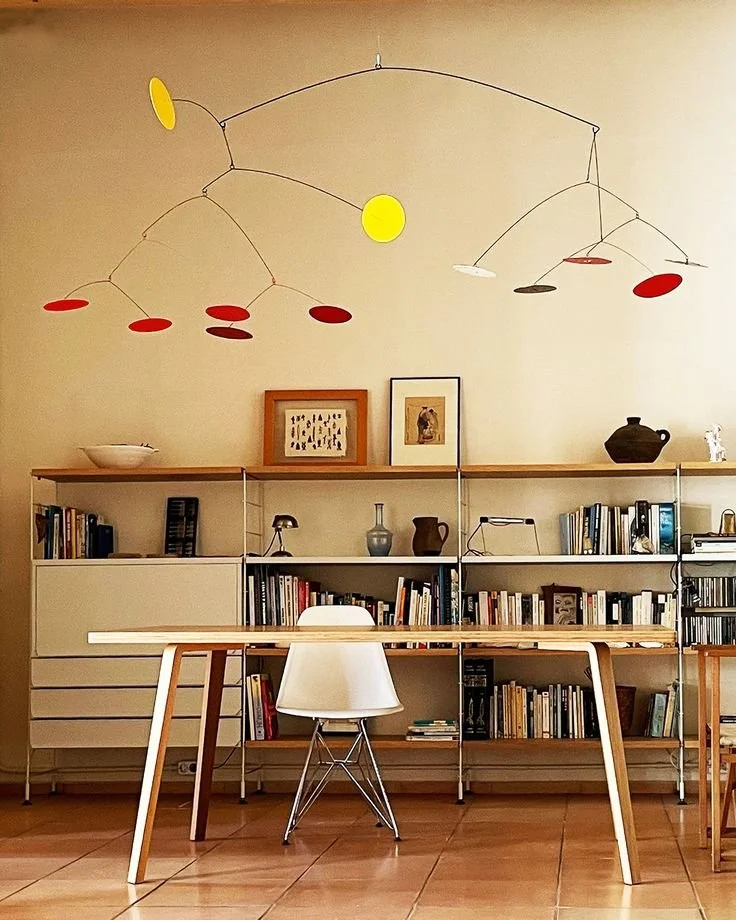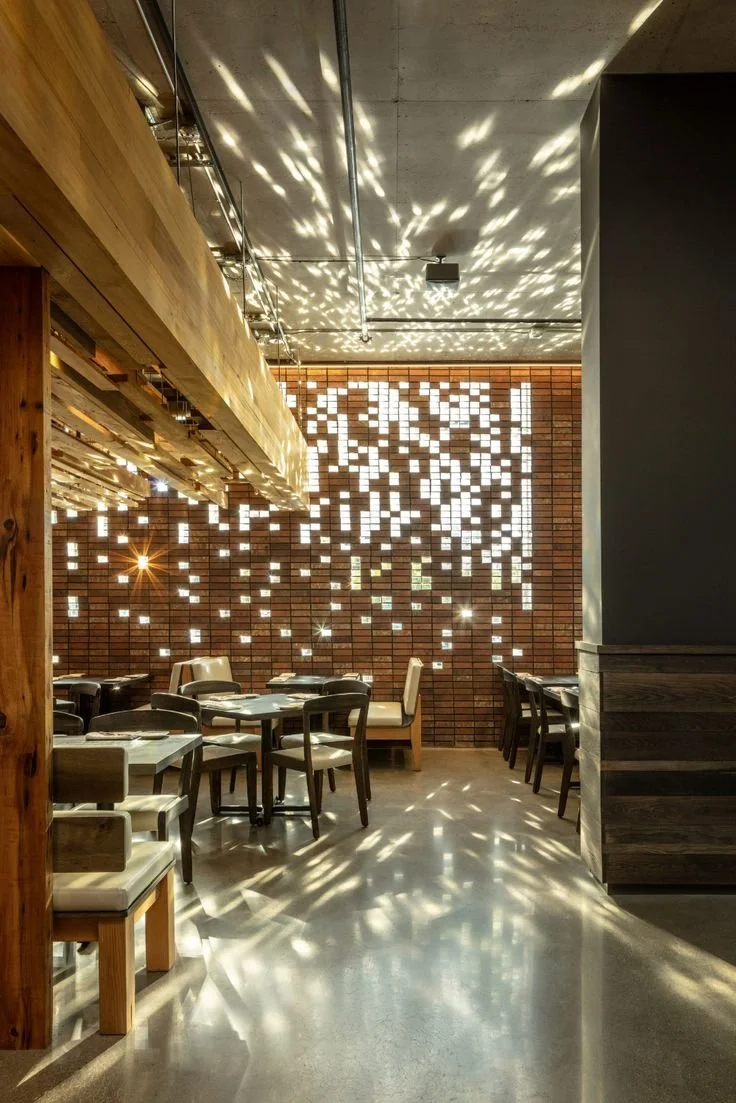Unexpected Surprises
The Magic of Unexpected Sensory Moments at Work
Modern offices can sometimes feel a bit predictable. But what if a subtle rustle, a passing shimmer of light, or a soft scent could help us reset and actually feel, and work, better?
That’s the charm of non-rhythmic sensory stimuli - little surprises that disrupt routine just enough to bring calm and clarity.
What Are These Surprises?
Non-rhythmic sensory stimuli are short, unpredictable experiences, like shifting light through a window, a passing scent, or the sound of water, that grab our attention for a moment. They don’t follow a regular pattern, which is what makes them interesting. In workplace design, they’re a key part of biophilic design because they bring natural variety into the space in a subtle, authentic way.
Mobiles placed over a desk can provide non-rhythmic sensory stimuli, one of the 14 patterns of Biophilic Design, supporting healthy workplaces
Why It Matters
Gives your eyes a break: We spend so much time staring at screens. A quick glance at something changing, even for a moment, lets our eyes rest and recalibrate.
Eases your mind: Unexpected sensory touches slow down your stress response, helping to lower blood pressure and steady breathing.
Helps your brain reboot: This kind of “soft fascination”, where something captures your attention gently, can help you refocus and feel refreshed.
What Does the Research Say?
Attention restoration: According to Attention Restoration Theory, natural scenes, especially ones that shift or move, give our tired mental muscles a moment to recharge. This is the kind of easy engagement that doesn’t demand effort but still clears your mind.
Real benefits at work: Studies show that biophilic elements like adding nature’s rhythms into built environments, boost productivity (by around 6%), creativity (by up to 15%), and well-being. Even brief exposure, just 5–20 minutes, seems to work wonders.
Adding layers helps:
When these sensory moments team up with soft light, air movement, gentle scents, or ambient natural sounds, the impact is even more powerful, like a mini-reset for your senses and stress levels.
How to Bring This into Your Workspace
Non-rhythmic sensory stimuli can be added to an office in very concrete, low-risk ways. Try hanging mobiles or lightweight kinetic sculptures from ceiling voids or over reception desks; they move with air currents and provide small, unpredictable shifts in the visual field.
Water features are another option: small tabletop fountains or wall-mounted waterfalls add both visual shimmer and gentle sound, and are frequently recommended as compact, lower-maintenance ways to introduce “presence of water” into workplaces.
For quieter areas, lightweight curtains or fabric panels near operable windows let breezes create soft movement; these can be used to shape spaces while also adding subtle movement. As well, don’t forget plants placed beside windows or in spots with slight airflow so leaves can flutter.
For some more inspiration, we recommend taking a look at the installations from Studio Drift.
These little touches pack a lot of impact when creating human-first spaces where people feel taken care of, and help us bring our best selves to work.


